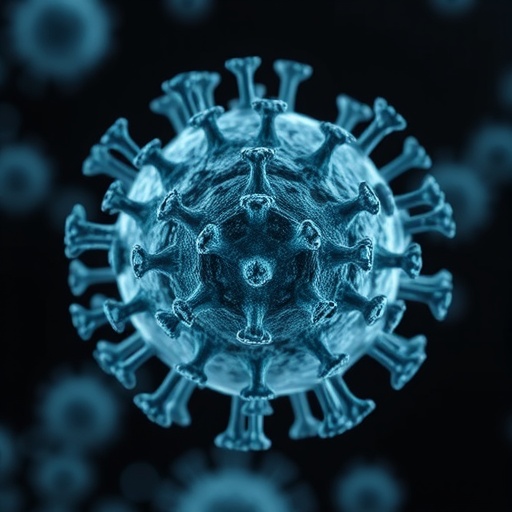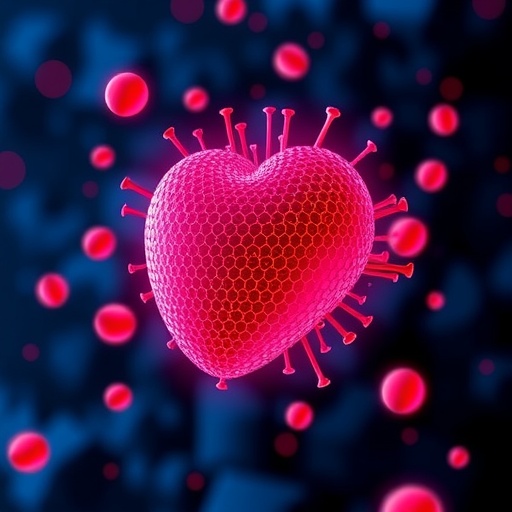In recent years, mental health research has increasingly spotlighted the intertwined complexities of first-episode psychosis, cannabis use, and suicide risk. A newly published narrative systematic review by Barresi, Martinotti, Maina, and colleagues breaks new ground by identifying critical high-risk periods and opportunity windows within these overlapping dimensions. This research ushers in a deeper understanding of when intervention efforts might wield maximal impact, potentially guiding clinicians, policymakers, and mental health advocates toward more precise, timely care strategies. The implications reach far beyond clinical settings—echoing across community health frameworks and public safety initiatives worldwide.
First-episode psychosis represents a critical juncture in the trajectory of severe mental disorders, often marking the onset of a lifelong struggle with schizophrenia spectrum illnesses and bipolar disorder. Yet, it is during this initial phase that patients are most vulnerable and simultaneously most amenable to treatment. The review underscores this paradox, delineating how the early psychotic phase encapsulates a high-risk window not only for worsening psychopathology but also for emergent behaviors like cannabis consumption and suicidal ideation or attempts. Understanding the delicate interplay between psychosis onset and these risk factors is pivotal for tailoring preventive interventions that could reshape patient futures.
Cannabis use emerges from the review as a particularly vexing factor, both as a potential trigger and an exacerbating element during the earliest stages of psychosis. Neurologically, cannabinoids interact with the endocannabinoid system, modulating neurotransmission in areas crucial for emotional regulation and cognitive function. For individuals entering the psychotic spectrum, this modulation may heighten susceptibility to psychotic exacerbations or intensify symptom severity. Moreover, cannabis use often co-occurs during high-risk periods, muddying clinical pictures and complicating treatment adherence. The review meticulously charts these temporal relationships, revealing how cannabis consumption can act as a catalyst, worsening prognosis and elevating suicide risk.
Suicide risk within the psychosis spectrum remains alarmingly high, especially in the early phases of illness. The narrative review presents compelling data on suicide ideation spikes and attempts, emphasizing that these tragic outcomes frequently manifest soon after psychosis onset, particularly in conjunction with substance use like cannabis. This confluence of factors creates a volatile psychological landscape, where despair, impaired reality testing, and impulsivity converge perilously. By illuminating these patterns, the review advocates for proactive suicide risk assessments and integrated substance use interventions during critical treatment windows.
A sophisticated component of the review involves the identification of “opportunity windows”—periods when clinical interventions might interrupt negative trajectories. These windows are not static but fluctuate along illness progression, patient engagement, and environmental factors. Early intervention teams focusing on first-episode psychosis have capitalized on these windows through psychoeducation, pharmacotherapy, cognitive behavioral therapy, and family support. The review adds nuance by mapping when cannabis-related behaviors might be most modifiable, indicating moments for targeted harm reduction strategies. Recognition of these timing factors could revolutionize service delivery models, shifting care from reactive crisis management to preemptive, nuanced intervention.
From a neurodevelopmental perspective, the authors explore how adolescent and early adulthood stages critically underpin vulnerability to psychosis and substance use. Brain maturation processes, including synaptic pruning and myelination, occur concurrently with exposure to environmental stressors and cannabis use, potentially precipitating psychotic episodes. The review synthesizes emerging neuroimaging studies that reveal altered connectivity patterns in reward and executive control networks among patients with combined psychosis and cannabis use histories. This mechanistic insight strengthens the argument for age- and developmentally tailored prevention initiatives, underscoring the necessity of early cannabis use screening in at-risk youth populations.
The narrative systematic review also attends to the heterogeneity across patient presentations, highlighting that not every individual experiences the same risk escalation or response to cannabis exposure. Genetic predispositions, social determinants, and comorbid psychiatric disorders create a complex mosaic influencing vulnerability and resilience. Precision psychiatry approaches, utilizing biomarkers and longitudinal profiling, may help stratify patients according to their risk windows, tailoring interventions with unprecedented specificity. The authors envisage a future where integrative clinical frameworks consider these multifactorial elements for personalized care pathways.
In addition to individual-level factors, the review illuminates broader social and environmental contexts shaping risk patterns. Socioeconomic adversity, stigma related to psychosis and substance use, and precarious access to health services act as systemic barriers that prolong untreated psychosis duration and compound suicide risk. The researchers emphasize how marginalized populations often encounter delays in diagnosis and care, constricting critical opportunity windows for intervention. Addressing these inequities through policy reforms and community outreach emerges as a crucial agenda to complement clinical advances.
Critically, the review integrates findings from longitudinal cohort studies that track patients from first-episode psychosis onset through various illness phases. Such data reveal how initial cannabis use trajectories often predict subsequent clinical outcomes, including hospitalization rates, symptom remission, and suicidal behaviors. These longitudinal insights are essential for constructing predictive models that can inform early warning systems within mental health settings. Healthcare systems equipped with such predictive capabilities could allocate resources more efficiently, focusing intensive interventions on those at highest imminent risk.
Within the pharmacological arena, the review discusses current evidence regarding antipsychotic medications’ effects on suicide risk and cannabis use patterns. While medications remain the cornerstone of psychosis management, emerging concerns about side effects, adherence difficulties, and their interplay with substance use complicate clinical decisions. Notably, some antipsychotics may mitigate impulsivity and mood instability, potentially reducing suicide attempts, but their impact on cannabis consumption is less understood. The authors call for more rigorous pharmacological trials incorporating cannabis use variables to optimize combined treatment strategies.
Further elaborating on suicide prevention, the review addresses psychotherapeutic interventions such as cognitive behavioral therapy tailored for psychosis (CBTp) and motivational interviewing for substance use. These therapies may be most effective during identified opportunity windows, fostering insight, coping skills, and substance moderation. Expansion of these evidence-based therapies into community mental health services could bridge the gap between hospitalization and outpatient care, which often marks periods of heightened suicide vulnerability. Integrative care models that simultaneously target psychosis symptoms, cannabis use behaviors, and suicide risk stand to improve long-term outcomes dramatically.
Technological innovations also hold promise, as acknowledged in the review, with digital health tools offering novel channels to monitor risk indicators in real time. Mobile apps and wearable devices can capture behavioral changes, mood fluctuations, and substance use patterns, alerting clinicians to worsening states. Such real-time data streams could refine the identification of high-risk periods and opportunity windows, enabling timely, personalized interventions. The integration of artificial intelligence to analyze these complex datasets might transform psychiatric care from episodic to continuous and predictive.
Importantly, the review highlights the ethical and practical challenges inherent in studying and intervening during these vulnerable periods. Balancing patient autonomy with risk mitigation, maintaining confidentiality, and addressing the stigma attached to psychosis and cannabis use are ongoing hurdles. Sensitively designed clinical protocols that empower patients and families while ensuring safety are vital. The authors call for collaborative efforts across disciplines, including psychiatry, neurology, psychology, social work, and public health, to navigate these complexities successfully.
Ultimately, this comprehensive review signifies a paradigm shift in understanding first-episode psychosis, placing cannabis use and suicide risk within a temporal framework that identifies when risks peak and when interventions can pivot outcomes. This temporal mapping offers a beacon for clinicians and researchers aiming to reduce the substantial global burden of psychotic disorders and their devastating sequelae. As mental health fields move toward precision and integration, these insights arm stakeholders with knowledge to craft responsive, anticipatory care models attuned to dynamic risk trajectories.
Moving forward, further research should explore how cultural factors influence these risk and window periods, as well as investigate novel pharmacotherapies targeting the endocannabinoid system in psychosis contexts. Additionally, policy initiatives expanding early psychosis intervention programs, combined with substance use prevention, could operationalize the review’s findings at population levels. The potential to save lives and improve quality of life among young people facing the dual challenges of psychosis and cannabis use is immense—and timely scientific synthesis such as this lights the path forward.
As society increasingly grapples with mental health crises compounded by substance use and suicide, this narrative systematic review is a critical contribution. It urges a reorientation from fragmented treatment to holistic strategies that recognize and address the high-risk periods where timely interventions may pivot destinies. The synergistic interplay of first-episode psychosis, cannabis use, and suicide risk emerges not as accidental overlap but as a pattern of vulnerability with intervention potential. Harnessing this understanding could transform epidemiological burdens into opportunities for hope and recovery worldwide.
Subject of Research:
High-risk periods and opportunity windows in the intersection of first-episode psychosis, cannabis use, and suicide risk; implications for timely intervention and prevention.
Article Title:
High-Risk Periods and Opportunity Windows in First-Episode Psychosis, Cannabis Use, and Suicide Risk: A Narrative Systematic Review.
Article References:
Barresi, M., Martinotti, G., Maina, G. et al. High-Risk Periods and Opportunity Windows in First-Episode Psychosis, Cannabis Use, and Suicide Risk: A Narrative Systematic Review. Int J Ment Health Addiction (2025). https://doi.org/10.1007/s11469-025-01550-x
Image Credits:
AI Generated
Tags: cannabis and psychosis relationshipcannabis use and mental healthcommunity health and mental illnessearly treatment for mental disordersfirst-episode psychosishigh-risk periods in psychosisintervention strategies for psychosismental health research on cannabispublic safety mental health initiativessuicide ideation and cannabis usesuicide prevention in psychosissuicide risk factors





